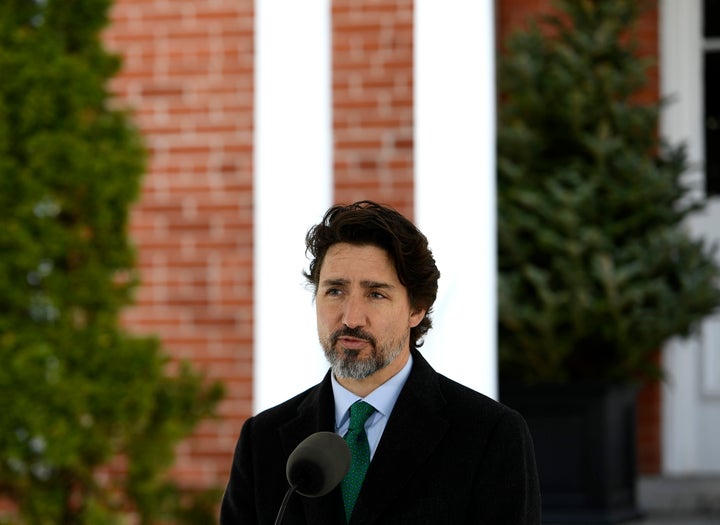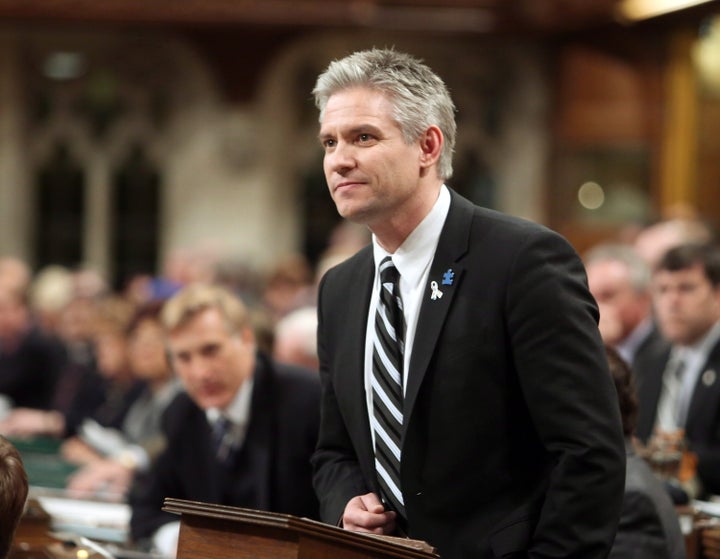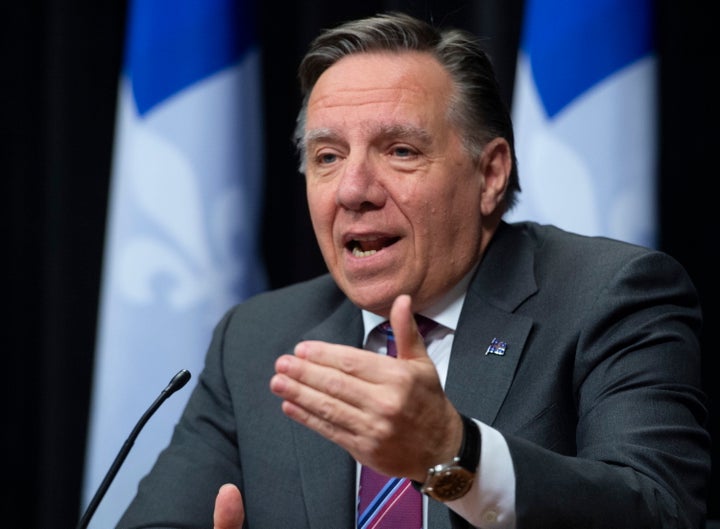
OTTAWA — More Canadians should be tested for COVID-19, Prime Minister Justin Trudeau said Monday, though he wouldn’t say whether anyone who wants to be tested should be.
As the provinces and territories begin to ease restrictions, Trudeau called testing an “essential” part of the road towards reopening the economy.
“We need to do more testing right across the country,” the prime minister said in response to a question by HuffPost Canada.
While more than one million Canadians have been tested — 1,119,026 according to latest figures Monday morning — Trudeau said the numbers need to increase.
Watch: Canada needs increased testing before life can return to normal, health officials say
“We’ve managed to support the provinces on obtaining reagents, on obtaining equipment for [testing]. We need to see more lab capacity opening up — which many provinces have already done in turning to universities and private labs,” the prime minister said. “There is lots more to do on testing. We need to make sure we are working on that all together.”
Several provinces have fallen short of their own testing goals and far short of the national public testing capacity of 60,000 daily tests.
Canada’s Chief Public Health Officer Dr. Theresa Tam told HuffPost on Saturday that there were “diverse” reasons some provinces and territories were not yet reaching their targets. Some jurisdictions “might actually have human-resource issues” that are impeding their ability to conduct more tests, she said.
“You need, actually, people to go out to test cases. So making sure you have the necessary trained people who can do the testing is one [reason],” Tam said.
Another reason, she suggested, was “accessibility … testing clinics closer to where people are.”
Dr. Howard Njoo, the deputy chief public health officer, noted how Montreal had made greater strides in testing by using mobile sites in hot spots to make it easier for people to get tested.
Trudeau won’t weigh in on Quebec reopening schools, daycares
Federal officials have gone to great lengths not to point the finger at provinces that might be lagging. Last month, Trudeau noted that provinces have the authority to determine what is in their best interest.
“It’s not up to the federal government to check or oversee the provinces,” Trudeau said on April 27. “Every province is in [a] different situation. Regions within the province are in different situations, and I have full confidence in the premiers of the provinces and territories to move forward in a way that is right for them.”
On Monday, for example, Trudeau declined to comment on whether he felt Quebec Premier François Legault was moving too quickly with that day’s reopening of elementary schools and daycares outside Montreal.
But he said the sacrifices Canadians had made over the past two months, of staying home, of self-isolating, of not seeing their parents and grandparents could “all go up in smoke” if a jurisdiction “makes the wrong decisions.”
“All orders of government … will be held to account if reopening happens too quickly and Canadians have to lock down once again in a few weeks because people were over-eager to get the economy going,” Trudeau said, when asked if he was prepared to put pressure on provincial premiers to move more slowly with their reopening plans.
Ottawa has worked cooperatively with the provinces to establish guidelines to inform local decision-making on the proper level of testing and contact tracing, and officials say they’ve worked to ensure the provinces and territories have enough medical capacity to handle a potential surge.
On Friday, Tam said she was unaware of any shortages of tests to explain why the provinces were not meeting their targets. “Right now, I’m not hearing anything specific about swabs or about [chemical] reagents. But I’m not saying that, next week or the week after, something suddenly wouldn’t happen,” she said.
Testing remains key to identifying new surges or clusters of infection, and it will take on an increased importance as more Canadians leave their homes, start shopping outdoors, and return to their physical workspaces.
The virus is still circulating and is a continued cause for concern.
Monday, Chinese authorities reported five new cases of COVID-19 in Wuhan, the city where the virus originated. That is the biggest increase of new infections there since March 11, The Guardian reported, and comes after officials had begun to ease restrictions last month. There is also an uptick in new infections in South Korea, a country hailed for its swift response to the novel coronavirus, with the beginning of a second wave attributed to a spread in newly reopened nightclubs.
Conservative MP Mike Lake told HuffPost he believes Canada isn’t testing enough.
“If we’re going to loosen restrictions, our testing and tracing regime needs to be much stronger,” he said by phone from his home in Edmonton.

Lake has pressed the point during the House of Commons’ daily virtual sittings. Last week, he quizzed Health Minister Patty Hajdu on whether she was satisfied that Canada’s weekly average of 26,000 daily tests was half the 60,000 daily capacity of national public health laboratories.
Hajdu responded that she was “so amazed by the work the provinces and territories have done in a very short time to increase their capacity.
“... Having said that,” she added, “I know that we can all do better.”
Lake, who has been keeping a daily tally of testing rates across Canada, noted that he is not a medical expert, but he expressed concern that without more testing, thousands of Canadians may be walking around unaware they are contagious.
“Yes, we’re social distancing. We’re being careful, but it’s still being transmitted somehow.”
With summer coming and people’s guards coming down, testing and tracing is going to be critical, he said.
The longtime MP said he thinks people with mild cold symptoms are probably still going out to get their own groceries. “A minor cold, it’s easy to write that off because people want to live their lives. It’s human nature.”
And because the vast majority of Canadians have never been infected with COVID-19, the risk when restrictions are relaxed is great. “Nothing has changed in the circumstance regarding the actual virus right here, as far as we can tell [since] we haven’t done serologic testing,” he said.
Tory MP: Canada must up its game
Serologic testing is a blood test that tests for antibodies and can help determine how much of the population is infected with SARS-CoV-2, the virus that causes COVID-19.
“The World Health Organization, they’ve been saying this like repeatedly and adamantly every briefing: find, isolate, test, treat, trace. My point is, I still think it’s important right now that we up our game.”
Tam told HuffPost that she and her colleagues — the other chief medical officers of health across the country, as well as the Public Health Laboratory Network — are beginning to now discuss strategies for the next phase of the pandemic: how to expand testing.
“You can’t just indiscriminately test areas where there are no cases and for which people have no symptoms,” she said.“You have to test for the right reasons and the right place. So just upping the numbers isn’t necessarily the approach.”
But the provinces and territories are beginning to expand testing to include people with a whole range of symptoms, she said, as a way to “widen the net to see if there’s any further cases in the community.”
Officials at all levels also need to ensure they maintain and increase surge capacity, to be ready for the next round of inflections, Tam added.
“If you expend a lot of tests, reagents, swabs, whatever now in areas where that’s probably not needed, you’re then diminishing that capacity for when you actually need it,” she said.
“This is a complex discussion where we all agree that even with 60,000, you know, that’s a good capacity, but we’re not stopping increasing our supplies, resources, etc., to even beyond that, because you’ve got to sort of prepare for resurgences,” she said.

Trudeau noted Monday that the situation is very different across the country. Prince Edward Island, with its 27 cases and zero deaths, is very different from British Columbia, with its 2,330 cases and 129 deaths; both are different from Ontario with 20,546 confirmed cases and 1,669 deaths or Quebec with 37,721 cases and 2,928 deaths.
“Obviously, every jurisdiction needs to make determinations about what is the right and maximal level of testing that they need, but we will be there as a federal government to encourage them to do as much as they can and make sure that we are helping them access the material needed to do just that,” Trudeau said.
While case counts differ across the country, so do testing rates.
Alberta on Sunday reported it had so far tested 173,023 people for COVID-19, approximately four per cent of the population. There, the testing criteria was expanded in mid-April to allow any person exhibiting symptoms of COVID-19, including cough, fever, runny nose, sore throat or shortness of breath, to be eligible for a test.
In Ontario, 433,316 people have been tested, about three per cent of the population. But testing in places such as Toronto and Ottawa remains mostly limited to only those with symptoms of COVID-19 who are also at high risk of transmitting it to others, such as health care workers, first responders, U.S.-Canada cross-border workers, caregivers, and those working in food services, hospital inpatients, residents in long-term-care homes or those with a close contact who had COVID-19, international travellers, or members of remote or Indigenous communities. Ottawa recently expanded testing to residents over the age of 60.
Ford: ‘Start picking your socks and start doing testing’
The province’s slow testing rates led Ontario Premier Doug Ford last week to lash out at officials after numbers dipped to 10,654, only two-thirds of the provincial target of 16,000 tests per day.
“I’m disappointed in the chief medical officers in certain regions – I’m not going to name them, they know who they are,” Ford said. “Start picking up your socks and start doing testing. I don’t know what the big problem is with the testing. It’s frustrating as anything.”
Ontario’s chief medical officer Dr. David Williams has said the province has the capacity to process more than 19,500 tests each day.
The Canadian Press reported Monday that British Columbia has the lab capacity to complete 6,500 tests per day at 82 collection sites, which its Ministry of Health said are well-stocked with supplies.
But last week, daily tests completed in B.C. ranged from about 1,800 to 2,800, the agency said.
Alberta has the capacity to complete up to 7,000 tests a day but has recently been averaging fewer than 4,000. The province aims to expand its daily capacity to 16,000 by June.
In Nova Scotia, the province now has the capacity to perform 2,500 and 3,000 tests each day, though it is operating below capacity now that flu season is over and fewer people with symptoms similar to COVID-19 are coming in for testing, said Dr. Todd Hatchette of the Nova Scotia Health Authority. The province completed 9,730 tests in the last two weeks of April.
In Quebec, which has seen the most deaths — primarily in long-term-care homes — the government has tested approximately 3.38 per cent of the population.

Legault’s government has promised to ramp up testing to 14,000 to 15,000 tests a day as businesses and schools reopen.
Nima Machouf, an epidemiologist and professor at the University of Montreal’s School of Public Health, told the Canadian Press that Quebec’s testing data reflects the shortages of testing materials and capacity that the province experienced.
“The ideal would be to test massively since the beginning, but we didn’t have the tests in hand to do it,” she said.
Because of a lack of tests, testing criteria remained narrow, she said, focusing on segments of the population where there were more likely to be positive cases: symptomatic travellers at first, then their contacts who fell ill in the community, then health workers and people associated with long-term-care homes.
The actual rate of community infection in Quebec is probably much higher than the tests reflect, said Machouf, given that infected people can be asymptomatic.
It will be “very important″ that Canada’s testing strategy include testing not only people with symptoms, but also their contacts, and random members of the population to find out how many people might be spreading the virus without showing symptoms, she said.
“Everywhere, not only in Quebec, but in Canada and around the world, it’s only the tip of the iceberg we’re seeing.″
With files from The Canadian Press and Ryan Maloney